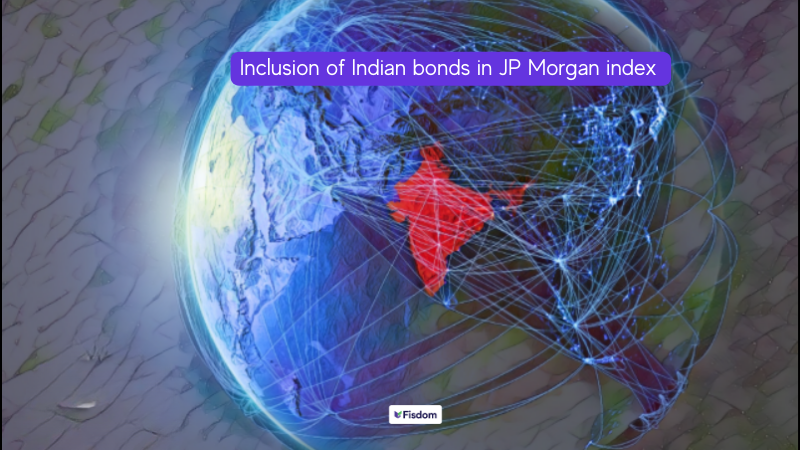
HDFC merged with HDFC Bank effective from July 1, 2023. This merger of India’s largest housing finance company with the country’s largest private sector bank has created the third-largest entity in India, in terms of market capitalization. This $40 billion all-stock merger resulted in the creation of the fourth-largest bank in the world after JPMorgan Chase, the Industrial and Commercial Bank of China and Bank of America.
Read on to find out everything you need to know about HDFC-HDFC bank merger.
Key points on HDFC and HDFC Bank merger
Here are some of the important details that you need to know about the merger between HDFC and HDFC Bank:
- Current size – HDFC Bank boasts of more than 6,300 branches across the country catering to nearly 3,000 cities and towns. More than half of the bank’s branches are strategically located in semi-urban and rural areas. This will benefit the merged entity through product offerings surrounding affordable housing.
- Deal size – The merger has resulted in a combined balance sheet of nearly Rs. 17.87 lakh crores. Post the merger, the combined entity’s net worth is estimated to be Rs. 3.3 lakh crores, thus making HDFC Bank nearly double the size of ICICI Bank. The merger will also enable the merged entity to carry out underwriting at a substantially larger scale.
- Opportunities – 70% of HDFC customers were not associated with HDFC Bank. With this merger, the bank will gain from significant cross-selling opportunities.
- Competition – This merger will place the combined entity in a very strong place to be capable of countering competition and will further make the mortgage business more competitive.
- Mortgage scale – HDFC Bank’s mortgages saw a CAGR of 24.5% standing at Rs. 702.2 billion in 2021. The merger will now result in the firm’s loan book having large contributions from mortgages as these will account for nearly 33% considering the segment is rapidly growing.
- Management – The merged entity will be led by HDFC Bank’s CEO Sashidhar Jagdishan.
The loan accounts of HDFC customers will be transferred to HDFC Bank post the effective date of merger. However, HDFC portal and mobile application would continue to work as usual.
So, if you are a HDFC customer, your loan account number, terms of loan agreement and login credentials will remain unchanged. The merger will also not have any impact on interest rates and repayment cycle of the loan. This means the EMI will remain the same.
How did HDFC and HDFC Bank customers benefit from the merger?
The HDFC and HDFC Bank merger is being described as a coming together of equals. The customers of both organizations will therefore be the biggest beneficiaries. The merged entity will benefit from the synergies of these two organizations. For instance, the mortgage business will have access to low-cost bank funds. This will ensure that HDFC continues to remain competent in the mortgage lending business.
With this merger, HDFC’s shareholders will get HDFC Bank’s 42 shares for every 25 shares of HDFC. While existing shareholders of HDFC will have 41% ownership of HDFC Bank, HDFC Bank will become an entirely publicly owned bank.
What do investors need to know about the HDFC-HDFC Bank merger
Here is what investors of both HDFC and HDFC Bank need to be aware of:
- The stock holdings of HDFC Ltd in HDFC Bank will be extinguished as per the merger agreement.
- HDFC Bank will be an entirely publicly owned company post the merger.
- All of HDFC’s subsidiaries, including HDFC Life Insurance and HDFC Asset Management Company, would be subsidiaries of HDFC Bank.
The bank won the 2021 award for the World’s Best Bank published by Forbes jointly with the market research firm Statista.
Strategic benefits of the merger
The Indian economic environment does not offer significant incentives to standalone NBFCs. Since the RBI has also been tightening rules around these, many top NBFCs find it tough to comply with the regulations. Since these norms are very similar to those applicable to banks, it makes sense for the housing finance company to merge with its large-sized banking arm.
The merger between HDFC and HDFC Bank is seen as a strategic move that will also have certain regulatory advantages for both companies. Regulations surrounding banks and NBFCs (Non-Banking Financial Company) have been harmonised in the past few years, enabling easy merger decisions.
The merger decision is also based on the idea that the combined entity will gain a strategic advantage to attain faster and easier growth.
Conclusion
In conclusion, the merger between HDFC and HDFC Bank was estimated to bring substantial benefits. The new entity now has the capacity to underwrite larger ticket loans, including infrastructure loans, thereby boosting credit flow in the economy. It also aims to enhance home loan offerings to a broad customer base and accelerate the pace of credit growth. The merger has marked the beginning of a new chapter in HDFC Bank’s history, promising improved services for low- and middle-income groups and potential for significant economic impact. However, the long-term success of this merger in delivering on its promises remains to be seen, making it a pivotal moment in India’s corporate landscape.
FAQs
After the merger, HDFC Bank will be entirely publicly owned and existing shareholders of HDFC Ltd will get 41% of HDFC Bank’s ownership.
The merger transaction of HDFC and HDFC Bank involves the amalgamation of HDFC’s two wholly owned subsidiaries namely, HDFC Holdings and HDFC Investments with HDFC Bank. HDFC Ltd. is a promoter of HDFC Bank and currently holds about 21% of the bank’s share capital. After the merger, all of HDFC Ltd’s subsidiaries and associate companies will be owned by HDFC Bank.
While NBFCs tend to raise capital at a much higher cost, traditional banks can access low-cost capital that comes in the form of savings and current account deposits. With this merger, HDFC Ltd will gain access to HDFC Bank’s low-cost deposits. HDFC Ltd can leverage HDFC Bank’s CASA ratio of more than 47.1%.
How will HDFC Bank benefit from the merger with HDFC Ltd?
By merging with HDFC Ltd, HDFC Bank can quickly build its housing loan portfolio by offering mortgages to customers through its core products. Currently, the bank has 11% exposure to mortgages whereas post-merger, the company will have 33% exposure, resulting in a 200% rise.



























